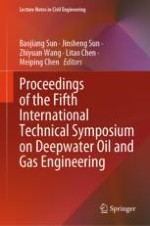2024 | OriginalPaper | Buchkapitel
Research on Hydrate Formation Risk in the Wellbore of Deepwater Dual-Source Co-production
verfasst von : Peng Liu, Shujie Liu, Jihao Pei, Jianbo Zhang, Weiqi Fu, Zhiyuan Wang
Erschienen in: Proceedings of the Fifth International Technical Symposium on Deepwater Oil and Gas Engineering
Verlag: Springer Nature Singapore
Aktivieren Sie unsere intelligente Suche, um passende Fachinhalte oder Patente zu finden.
Wählen Sie Textabschnitte aus um mit Künstlicher Intelligenz passenden Patente zu finden. powered by
Markieren Sie Textabschnitte, um KI-gestützt weitere passende Inhalte zu finden. powered by
